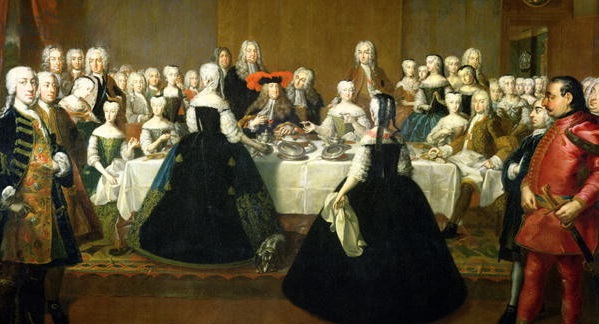Une journée d’étude internationale organisée par le Centre d’Études ibéro-américaines de la Faculté des lettres de l’Université Charles (SIAS FF UK), le CEFRES et l’Institut d’histoire de l’art de l’Académie des Sciences de République tchèque (ÚDU AV ČR). La coopération est réalisée dans le cadre du projet de recherche « Cataloging and study of the translations of Spanish and Ibero-American Dominicans ».
Date-limite des propositions (250 mots) : 26 juin 2017
Sélection des participants : 31 juillet 2017
Date & lieu : 25(-26) septembre 2017, Prague
Organisatrices : Monika Brenišínová (SIAS FF UK), Lenka Panušková (ÚDU AV ČR) et Katalin Pataki (CEU/CEFRES)
Le but de cette journée d’étude est de porter l’attention sur l’espace monastique comme objet de recherche multiple dans une perspective globale et interdisciplinaire. Nous invitons des propositions qui s’interrogent sur les façons dont les institutions monastiques ont contribué aux flux et aux échanges de pratiques culturelles et sur la façon dont leur rôle de médiateurs culturels ont façonné leur propre culture matérielle et leur politique territoriale. Nous n’appliquons aucune restriction sur les époques, espaces ou confessions concernées afin de générer un dialogue entre des chercheurs issus de diverses formations disciplinaires.
Pendant des siècles les monastères ont servi de centres d’éducation et de culture. Des œuvres littéraires, des sermons, des traductions et des objets culturels ont été produits entre leurs murs, dont l’usage n’a jamais été voué à l’isolement hermétique du monde extérieur : ils révèlent bien plutôt une politique consciente de structuration de l’espace physique et mental. Les monastères ont gardé des contacts non seulement avec leur environnement immédiat mais se sont également intégrés dans des réseaux intellectuels, spirituels et économiques plus larges tout en interagissant avec divers acteurs de l’ordre séculaire. Ils ont pu tenir lieu de bastions pour les missions culturelles et religieuses qui pénétraient les nouveaux territoires, suscité des interactions interculturelles et interconfessionnelles et facilité les transferts de savoir tandis que leur présence longue sur un territoire pouvait garantir une continuité — ce qui permet d’enquêter sur les changements, réformes et renouveaux qui les impliquent sur la longue durée. Leurs évolutions et transformations ont immanquablement modelé à la fois leurs espaces intérieurs (incluant la culture matérielle et l’architecture) et le paysage environnant ; ainsi, ils ont également contribué à la cristallisation de notions telles que l’identité, les frontières et la migration.
C’est dans ce cadre que nous invitons des propositions sur les champs thématiques suivants :
- les ordres religieux comme acteurs de la construction de la discipline sociale ; des confessions ; de la colonisation ; des missions culturelles, religieuses et politiques ; des réformes ecclésiastiques et sociales, etc.
- les monastères comme médiateurs dans la circulation des idées, des biens matériels (objets, reliques, matériaux précieux, drogues médicinales, etc.) ou des pratiques de dévotion, d’éducation, de soins
- la politique territoriale des institutions monastiques ayant modelé physiquement leur environnement immédiat (i.e., les pratiques agricoles, l’établissement de paroisses, de chapelles, de sanctuaires, etc.) et la perception du paysage dans lequel elles opéraient.
Cette journée d’étude est destinée en priorité aux jeunes chercheurs — doctorants et post-doctorants — désireux d’explorer des perspectives de recherche liées aux thèmes sus-mentionnés par des approches innovantes et de jeter les bases d’une coopération par-delà les barrières nationales et disciplinaires. En même temps, nous souhaitons créer un forum accueillant des spécialistes reconnus de ces questions et circulant des informations sur les projets de recherche en cours, les groupes de recherche académiques et les publications pertinentes.
Les articles tirés des communications pourront être publiés dans la revue académique Ibero-Americana Pragensia. La langue de communication de la journée d’étude sera l’anglais mais les présentations des communications soumises dans d’autres langages (allemand, français, espagnol) peuvent être acceptées.
Pour participer à la journée, merci de nous faire parvenir votre nom, affiliation institutionnelle et une proposition de communication de 250 mots d’ici le 26 juin à l’adresse e-mail suivante : workshopSIASCEFRES@gmail.com. Les candidats seront informés des résultats au 31 juillet.






